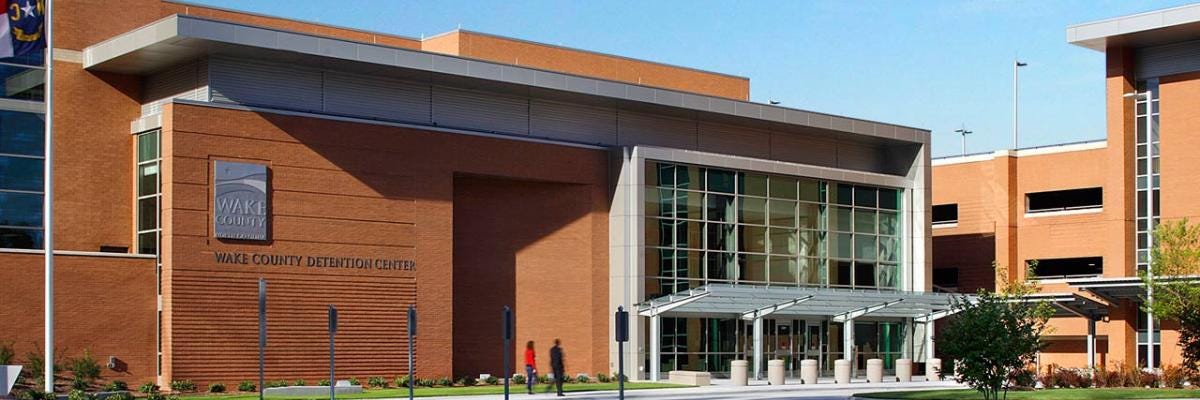Concerns Raised Over Wake County's $172 Million Jail Expansion Plan
The expansion is primarily being driven by significant overcrowding in Wake County's detention facilities.
Holly Springs, NC, Feb. 18, 2025 — During the February 17, 2025, Wake County Board of Commissioners meeting, concerns were raised over the county’s plan to expand and reconfigure its primary detention facilities. During the public comment period, Peter Van Dorsten, director of the North Carolina Interfaith Cash Bail Reform, spoke on behalf of advocacy groups, including local church organizations and the Poor People’s Campaign. He urged the county to reconsider the expansion, arguing that funding should be directed toward pretrial services and alternatives to incarceration.
Wake County has initiated a $172 million project to reconfigure and expand its detention facility over the next three years. The plan includes:
To address overcrowding, a new building will be constructed adjacent to the existing detention center, adding approximately 500 additional beds.
Renovations to the existing facility will improve security measures and update the aging infrastructure.
A phased funding approach, with $50 million allocated for the initial construction phase and $122 million for further development and renovations.
Project timeline: Construction will begin in the second quarter of 2025 and be completed mid-2028.
The expansion is primarily driven by significant overcrowding in Wake County's detention facilities. The downtown detention center and the larger facility on Hammond Road are nearing their capacity limits. The inmate population fluctuates daily, but the overall trend steadily increases, leading to situations where inmates are housed outside traditional cells due to space constraints. In some cases, inmates have had to sleep on the floor, indicating the severity of the overcrowding issue.
Projections indicate that the county must accelerate its plans to address this issue. An initial proposal to spend $21.9 million to reopen the detention center annex was considered a short-term solution. However, the sustained increase in inmate numbers necessitates a more comprehensive approach, leading to the current $172 million expansion plan.
The last major expansion of the Wake County Detention Center, which added 672 new beds, was completed in 2012. Since then, the inmate population has remained relatively stable until recent years, when a notable increase has been observed. This surge has strained existing resources, underscoring the need for additional capacity and modernized facilities to ensure safety and compliance with state standards.
During the meeting, Van Dorsten argued that the county should explore alternatives to increasing jail capacity and outlined three major concerns:
Investment in pretrial services – Advocating for community-based alternatives to detention, such as expanded pretrial monitoring programs, mental health support, and cash bail reforms to reduce unnecessary incarceration.
Comparing Wake County’s approach to other jurisdictions – Presenting data from other counties of similar size, which operate with lower detention bed capacity while maintaining public safety.
Improving public transparency on detainee demographics – Create a public data dashboard to track how many detainees are held solely due to their inability to afford bail, as well as those who could be better served through mental health programs or housing assistance rather than incarceration.
Van Dorsten presented a packet of information, including benchmark studies and case studies from other counties, arguing that funding incarceration alternatives could be cost-effective and socially beneficial.
As is customary, the Wake County Board of Commissioners did not respond to comments made during the public input period. Further discussions regarding the detention center's expansion are expected to occur in future meetings.

